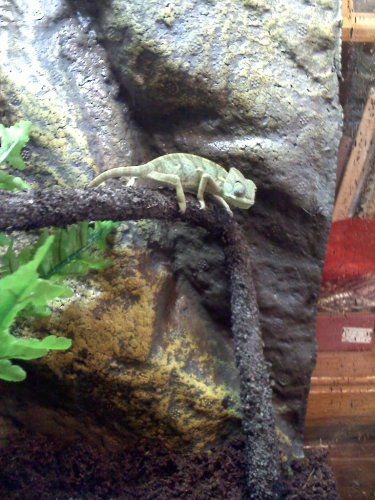Chelsie said..."ok im new to this site and im new to owning a cham i bought my lovely little gurl a couple days ago but she has me worried she has ben changing to dark collors all day and im woried idk what im doing wrong and i cant figure out if its good or bad i need help....and i bought her from a store so idk how old she or any health stuff about her or stuff about her parents i need help! "....how old is she? What species is she?
Oops...just realized you don't know how old....so maybe you could post a photo.
Oops...just realized you don't know how old....so maybe you could post a photo.
Last edited:





